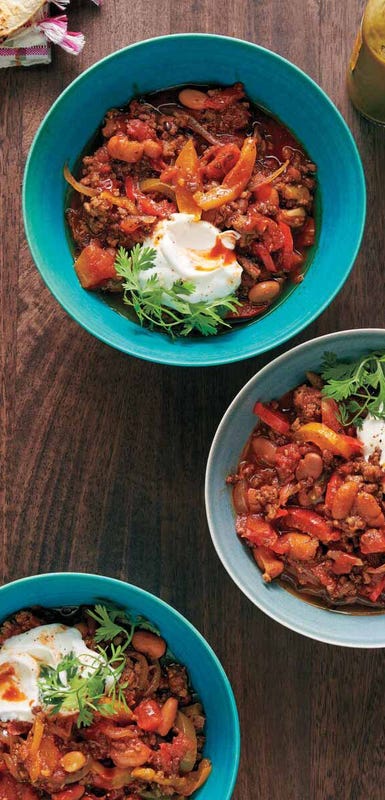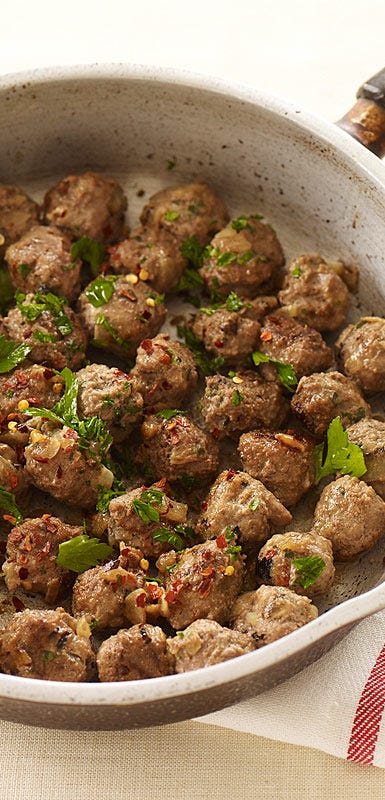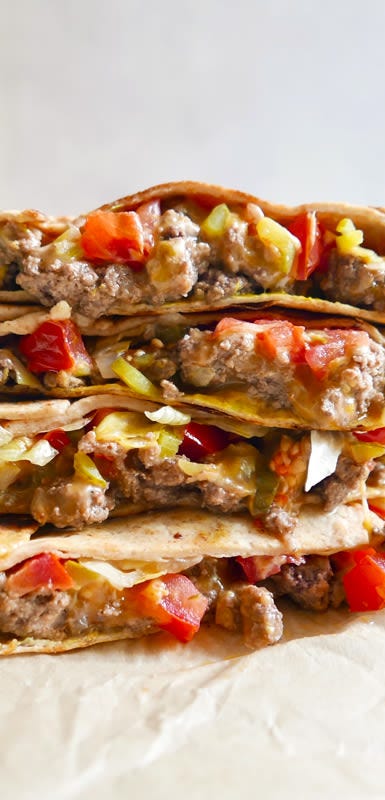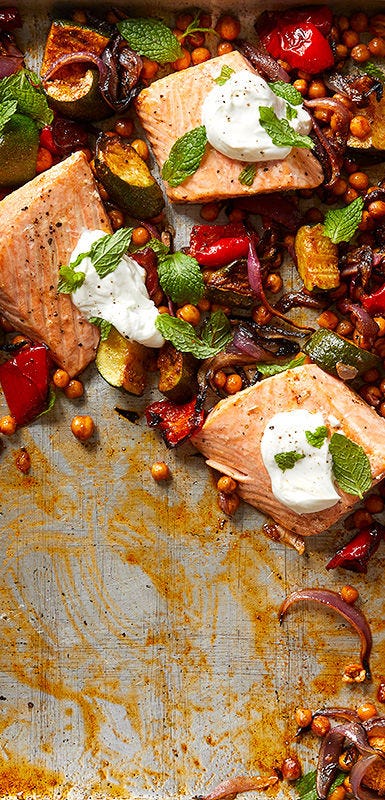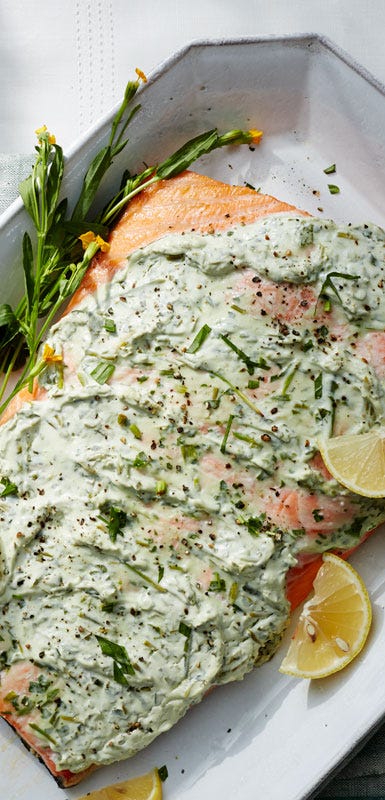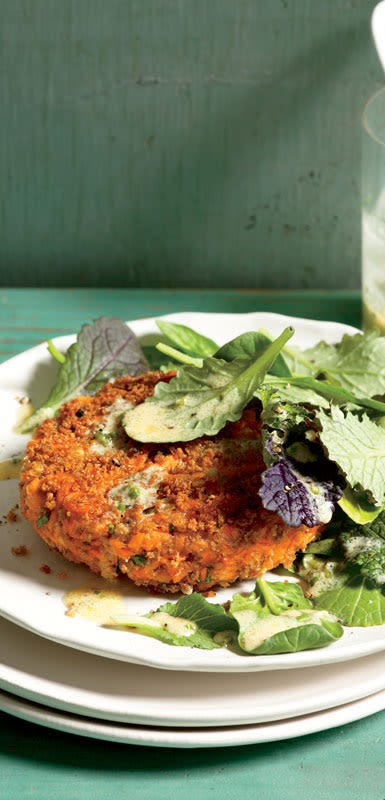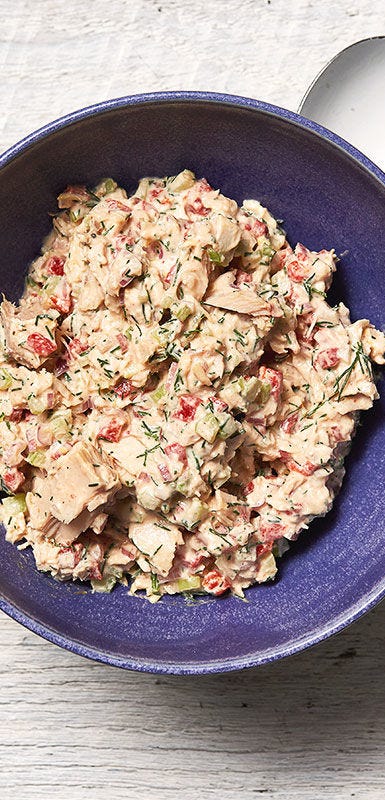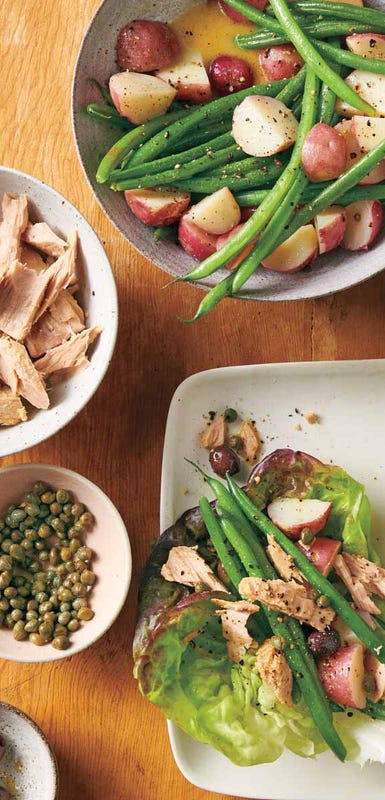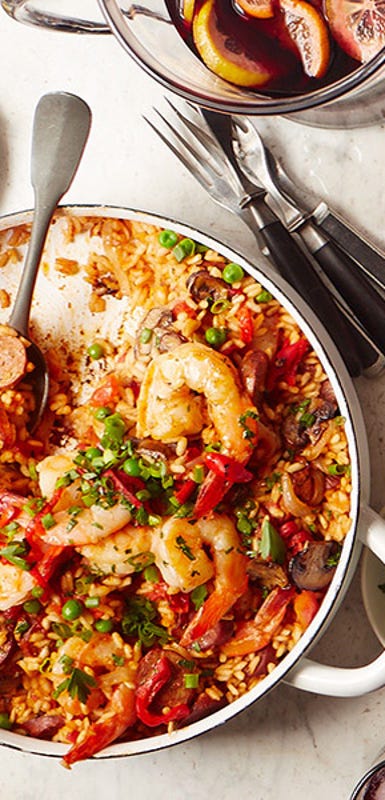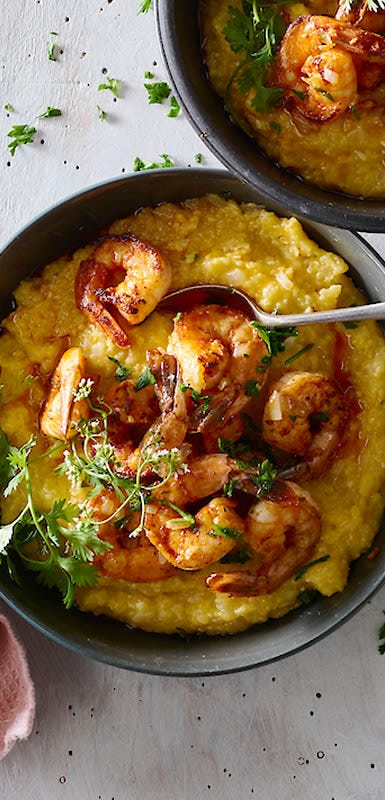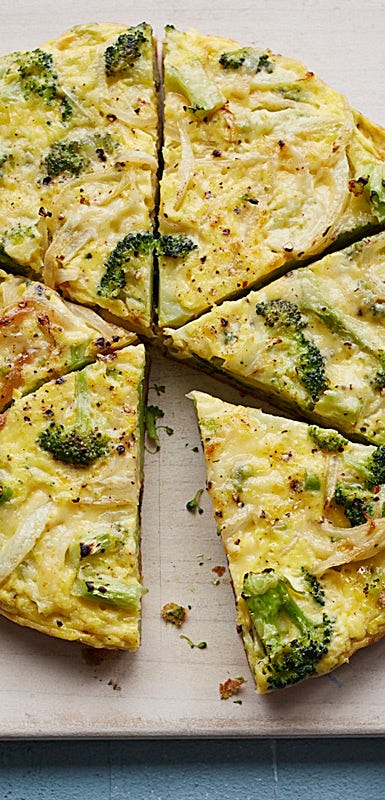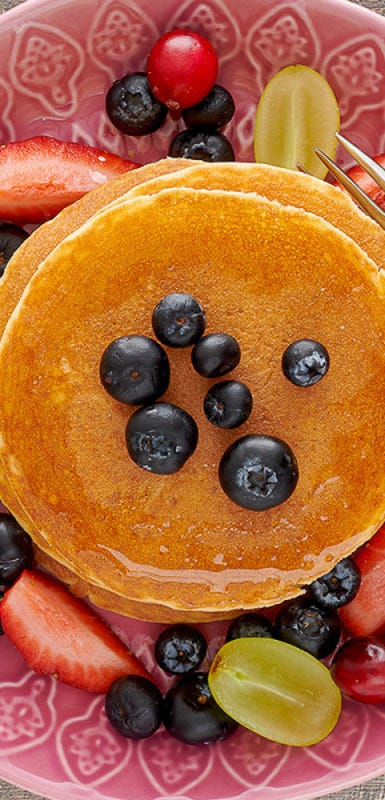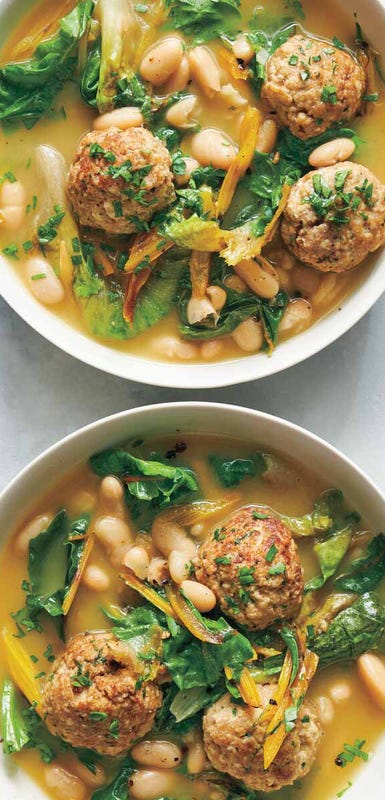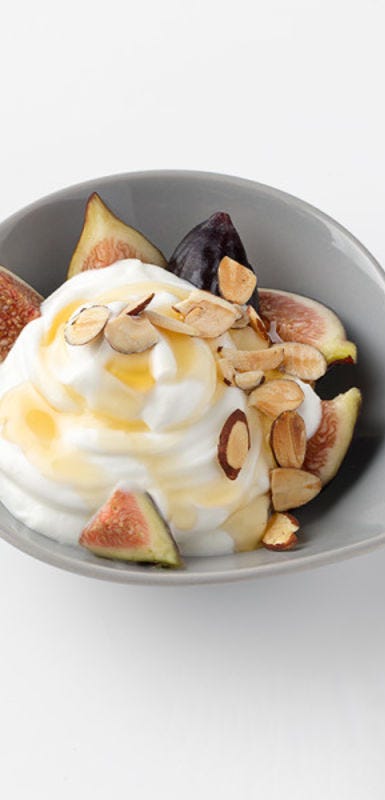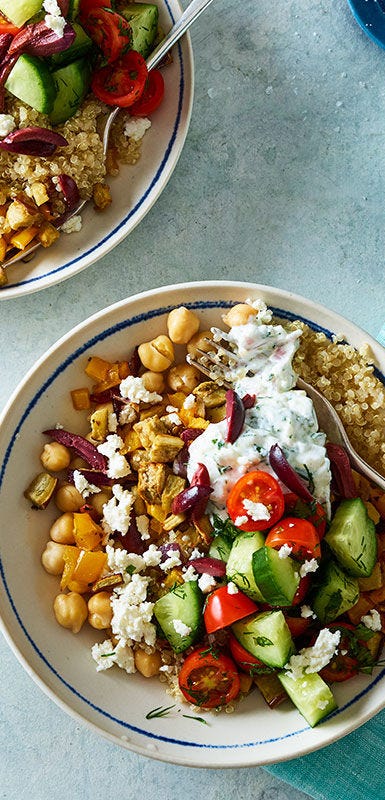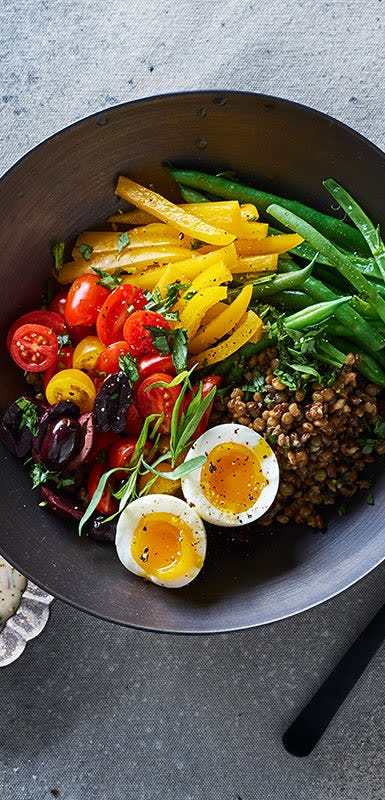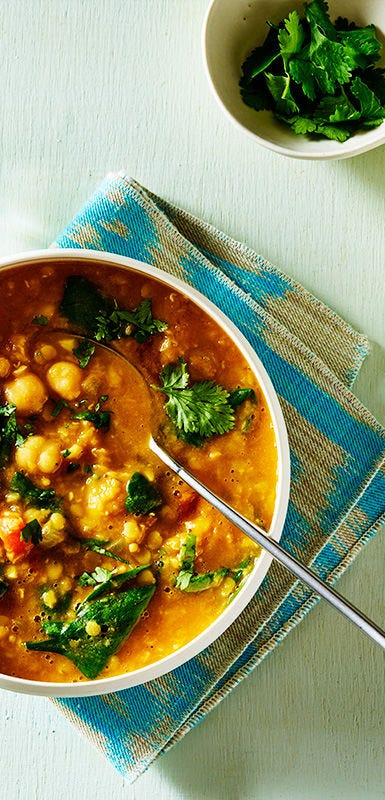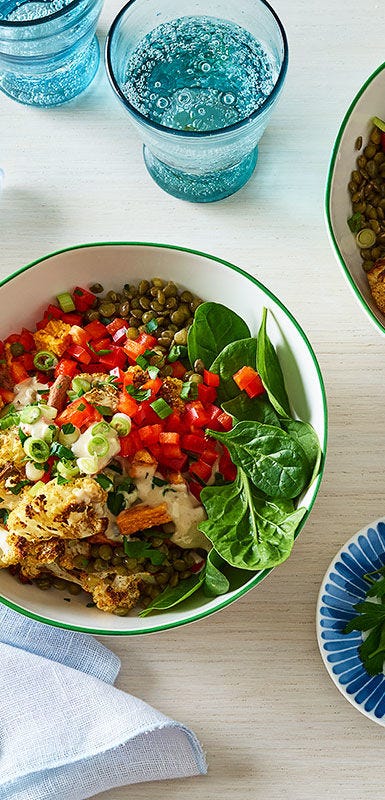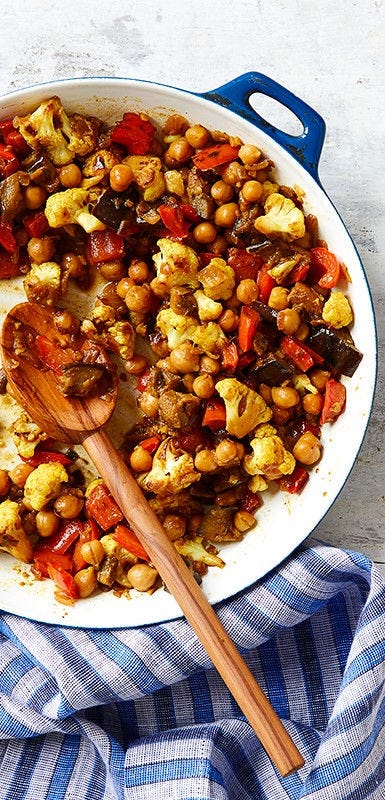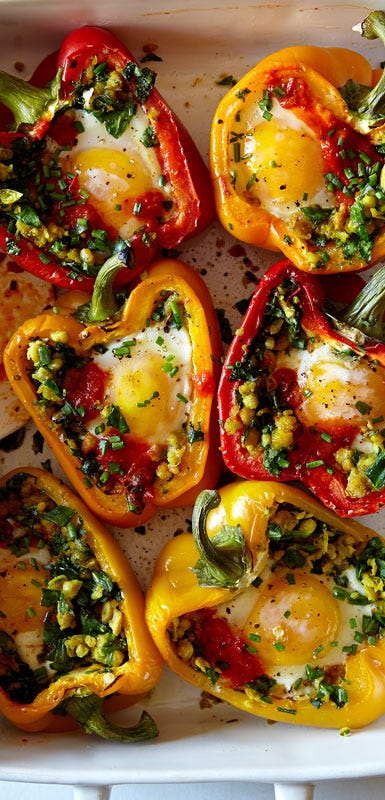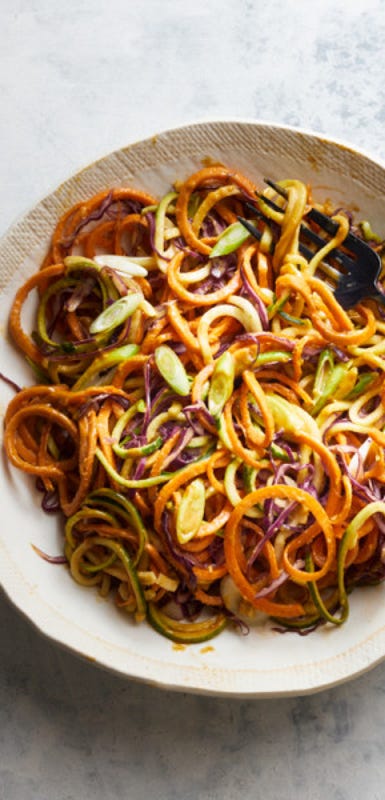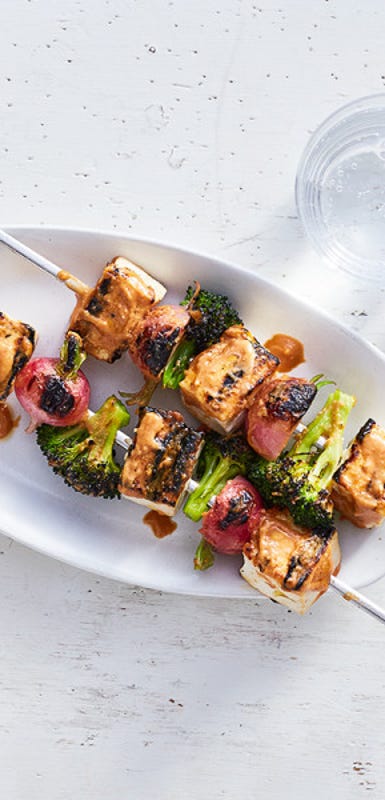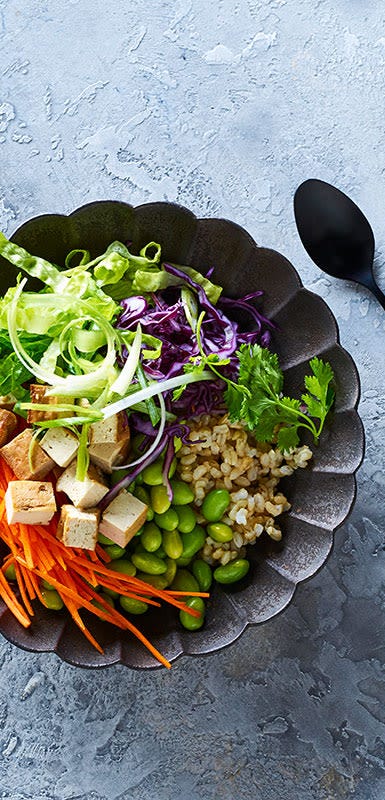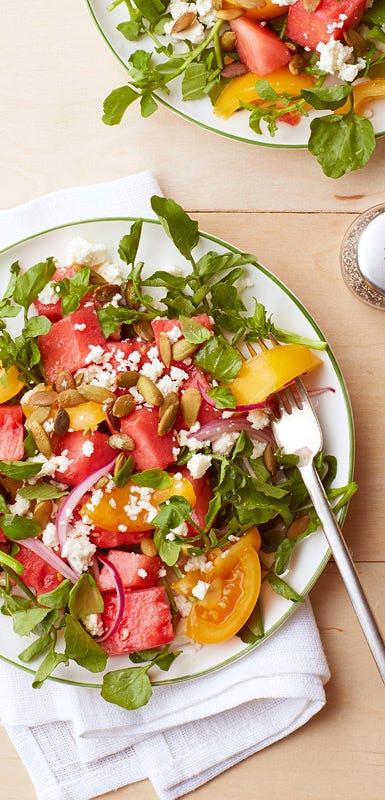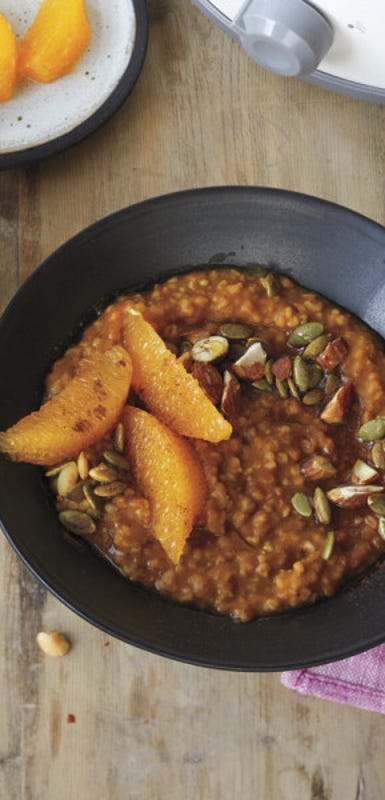15 high-protein foods that could help support your health and weight-loss goals
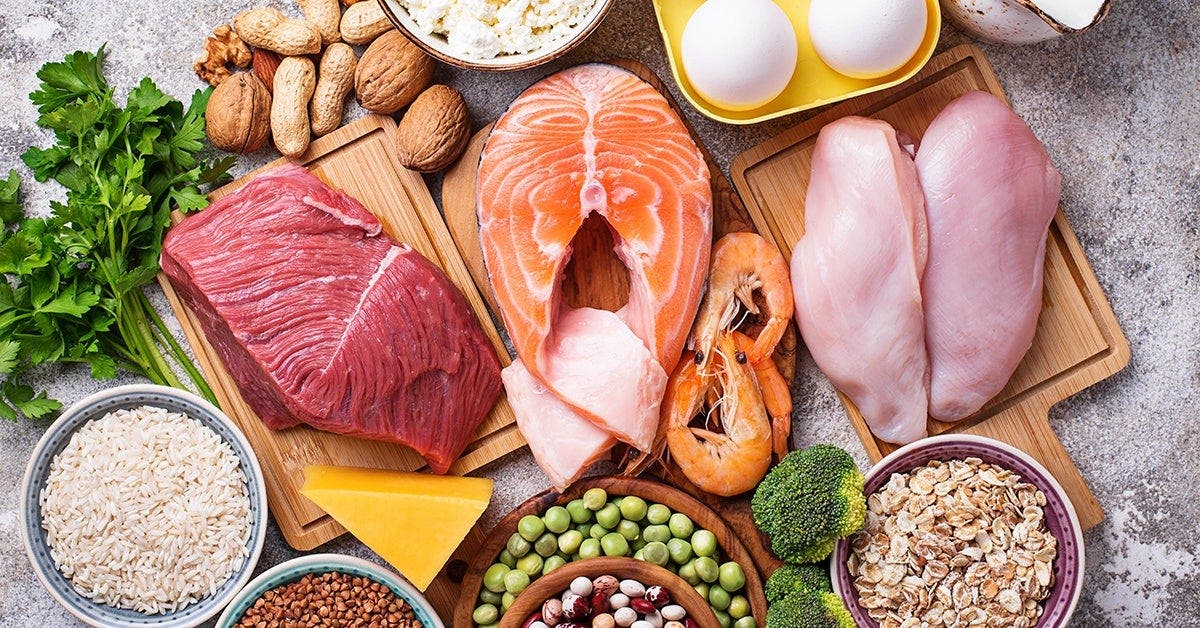
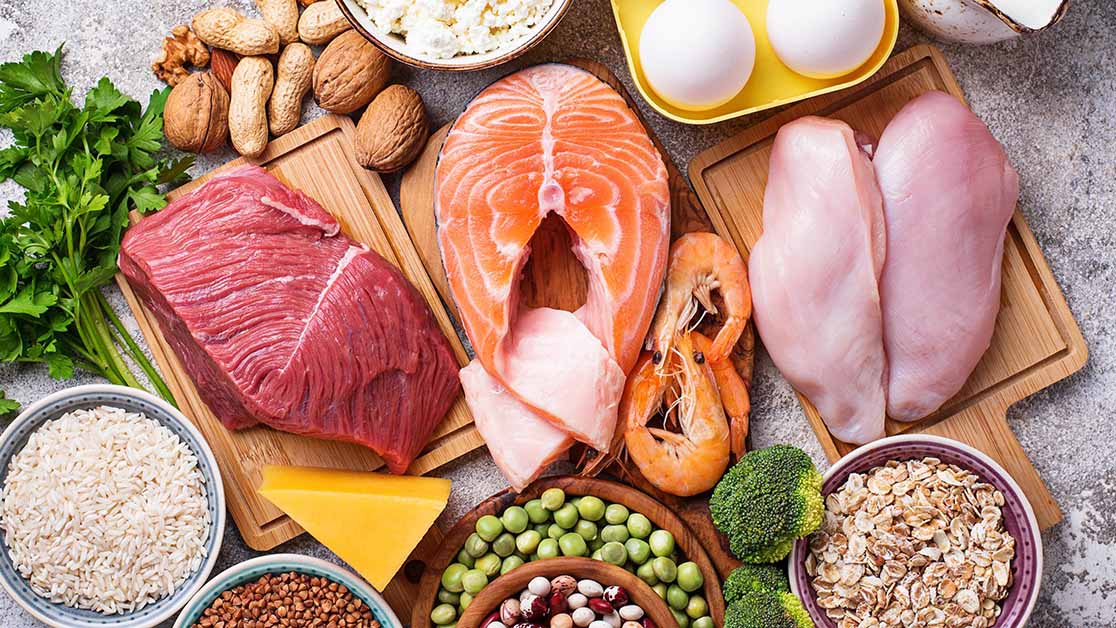
There’s no debate: Our bodies need protein to function. But in recent years, popular weight-loss plans have spotlighted this nutrient as the most important part of your diet. So what’s the deal? While there’s no magic pill for weight loss or overall health, high-protein foods should be an essential component of your daily meals and snacks, explains Jaclyn London, MS, RD, CDN, head of nutrition and wellness at WW. “By eating protein consistently throughout your day, you’re automatically making more satisfying food choices that will help you feel energized and stay fuller, longer—which may also help minimize between-meal grazing,” she says.
We tapped WW’s nutrition experts to shed more light on why protein is so important, how it relates to weight management, and some of the best sources of protein. Here’s the lowdown on 15 protein-rich foods, plus 43 delicious recipes to try:
The importance of protein-rich foods
Proteins are one of three macronutrients (along with carbohydrates and fats) that our bodies need to work, explains Angela Goscilo, MS, RD, CDN, nutrition manager at WW. “These provide us with energy and serve as building blocks for muscles and tissues,” she adds. Simply put, protein helps power nearly every system in the body—from strengthening bones, muscles, and cartilage to helping cell tissues repair and regenerate.
High-protein foods are so important because they contain essential amino acids that our bodies rely on—and can only get from food. Protein itself is made of 20 amino acids, and while the human body can produce 11 of these on its own, the remaining nine must come from our diets. Not to mention, many protein-rich foods also contain other key nutrients, such as B vitamins (like niacin, vitamin B12, vitamin B6, and riboflavin), selenium, choline, phosphorus, zinc, copper, vitamin D, vitamin A, and vitamin E, depending on the food.
While our bodies need micronutrients like vitamins and minerals in smaller amounts, protein is something we need in larger quantities. Here’s where things get a little tricky: There’s no one-size-fits-all recommendation on how many grams of protein you should eat. (This is why you won’t see a percent daily value for protein on nutrition facts labels.) The current recommended dietary allowance (RDA) for protein is 0.8 grams per kg of bodyweight—just over 7 grams of protein per 20 pounds. Meaning? A person who weighs 150 pounds needs about 55 grams protein per day. That said, most of us are consuming more protein than our baseline needs, according to London. “So as a dietitian, I’d rather you focus on eating various protein-containing food rather than the nutrient itself,” she adds.
Which foods are high in protein?
When you think of protein-rich foods, you likely picture meat and other animal products. And you’re right! But while red meat, poultry, and eggs are good sources of protein—meaning they are complete proteins that contain all nine amino acids our bodies need from food—they’re not the only ones.
Plant-based proteins are great additions to any diet—regardless of whether you’re vegan or vegetarian. Research suggests that replacing some animal proteins with plant-based sources could have positive health benefits: A 2019 study published in the Journal of the American College Of Cardiology linked the consumption of a mostly plant-based diet to a 41% lower risk of developing heart failure. Meanwhile, a 2014 meta-analysis of 37 studies published in JAMA Internal Medicine linked vegetarian, vegan, or semi-vegetarian diets (i.e., when you eat some meat, eggs, fish, or dairy) with lower blood pressure. Most plant-based sources don’t contain all nine essential amino acids, but there’s a simple solution: Eat a variety!
The most recent Dietary Guidelines for Americans recommends aiming for five and a half 1-ounce servings (or equivalent) of protein per day. What does that look like? One small steak is about 4 ounces, a can of tuna is 3-4 ounces, three eggs (whites and yolks) clock in at 3 ounces, and ¼ cup of cooked beans, chickpeas, or lentils is equal to a 1-oz serving.
Regardless of your eating style, there are so many delicious (and surprising!) protein-rich foods to add to your diet. Check out some of the best sources of protein:
The best sources of protein (per 100-gram serving)
| Chicken breast | 31 g |
| Ground beef | 20 g |
| Salmon | 19 g |
| Canned tuna | 19 g |
| Shrimp | 24 g |
| Eggs | 12 g |
| Whole milk | 3 g |
| Part-skim mozzarella | 24 g |
| Low-sodium cottage cheese | 12 g |
| Parmesan | 36 g |
| Greek yogurt | 10 g |
| Lentils | 9 g |
| Chickpeas | 8 g |
| Peanuts | 26 g |
| Edamame | 12 g |
| Pumpkin seeds | 19 g |
| Hemp seeds | 32 g |
1. Chicken breast
Chicken is a staple in many diets and for good reason! It’s a great source of protein, lower in saturated fat than some red and processed meats, and it packs a nutrient-dense mix of unsaturated fatty acids, vitamins, and minerals. For the leanest cut with the most protein, opt for grilled skinless chicken breast or skinless rotisserie chicken breast—one 3-oz serving delivers 26 grams of protein and 2.7 grams of saturated fat. You’ll also get key nutrients like selenium (which supports the immune system) and choline, which plays a role in memory, mood, muscle control, and heart health.
Try chicken breasts in:
2. Ground beef
From burgers to BBQ, beef is a mainstay in many recipes. When it comes to protein, a 4-oz portion of 90% lean ground beef contains 23 grams. Keep in mind, ground beef and other red meats are often higher in unhealthy saturated fats than other protein sources, London says. “You can still enjoy beef, just aim to add a mix of other lean options (like beans and seafood) to your diet,” she recommends.
Try ground beef in:
3. Salmon
Nutritionally, one 5-oz salmon filet provides up to 27 grams of protein and is packed with heart-healthy omega-3 fatty acids in their most bioavailable form (aka the most useful to your body). Salmon is also an excellent source of potassium and vitamins B6 and B12, and naturally provides vitamins A and D. Most Americans aren’t eating enough seafood, according to the USDA. (For reference, the Dietary Guidelines for Americans recommend eating a variety of seafood for a total of at least 8 ounces per week.) Salmon is a great way to help hit that target—enjoy it on your morning bagel, in pasta, baked with veggies, or even as a dip! You can also try experimenting with other fish like cod, snapper, arctic char, or trout.
Try salmon in:
4. Tuna
Canned tuna is a great source of vitamin D and omega-3’s, and as a shelf-stable lean protein source, it can’t be beat for convenience! One 3-oz serving of tuna in water (half a can) delivers around 16 grams of protein. You’ll also get other key nutrients, including potassium, selenium, and calcium. Canned tuna can often get a bad rep because of mercury concerns, but this mostly applies to white (albacore) tuna. That said, the FDA recommends limiting this type to 6 ounces per week or about one can, but light tuna and other types of canned, fresh, or frozen seafood can all help you get closer to the goal of at least 8 ounces of fish per week.
Try tuna in:
5. Shrimp
Shrimp, or prawns, are a delicious addition to many dishes and are packed with omega-3s and protein. Three ounces of cooked shrimp deliver 20 grams of protein. Shrimp often gets a bad rep due to its cholesterol levels, which are higher than other seafood options at 189 milligrams per 3-oz serving. However, recent research shows there’s no evidence to suggest that dietary cholesterol can increase risk of cardiovascular disease. The actual dietary culprit? Saturated fat. Shrimp has 0 grams of saturated fat per serving, making it a lean source of protein and a heart-healthy meat alternative.
Try shrimp in:
6. Eggs
While no single food you eat can make or break your health, eggs are considered one of the best sources of protein available, London says. They’re inexpensive, readily-available, nutrient-dense, and super versatile. A complete protein, one large egg contains 6 grams of protein. They’re also rich in choline, vitamins A and B12, and are one of the few foods that are natural sources of vitamin D.
Try eggs in:
7. Milk
Even though they’re not technically categorized as protein-rich foods by the USDA, milk and other dairy products are standout sources. One cup of whole milk provides 8 grams of protein. And since cow’s milk is often fortified with vitamin D and A in the U.S., you’re automatically getting some of these important nutrients by adding a splash to your morning coffee, using it as an oatmeal ingredient, or sipping on a cold cup of it post-workout. In fact, consuming a combination of protein and carbs after an intense workout may help improve muscle recovery. Despite being made from protein-rich nuts and seeds, plant-based milks (like almond, soy, or cashew) have lower protein levels. If you can’t tolerate lactose, soy milk typically has the highest protein content at 7–8 grams per serving.
Try milk in:
8. Cheese
Cheese is a delicious way to add flavor to nearly any dish, and let’s face it, what doesn’t taste better with a little cheese? The addition can infuse your meals with extra protein and nutrients like calcium, magnesium, and potassium. Based on the USDA portion guidelines, ⅓ cup of part-skim mozzarella delivers up to 9 grams of protein, a cup of low-sodium cottage cheese has 20 grams, and full fat, hard cheese like Parmesan packs 10 grams of protein per 1-oz serving. Like beef and other red and processed meat, cheese is a source of saturated fat. “The added benefit to full-fat hard cheeses is that they typically have stronger flavors, so you may find yourself using less,” London says. “This means you’ll still get the taste without overloading on saturated fat.”
Try cheese in:
9. Greek yogurt
Plain Greek yogurt is one of the most useful dairy-aisle finds—you can swap it for sour cream in dips or mayo in chicken salad; use it as a baking ingredient; add it to smoothies; or enjoy straight-up with fruit, nuts, or nut butter for a satisfying breakfast or snack. Unflavored nonfat Greek yogurt delivers 20 grams of protein per 7-oz serving. You’ll also hit 25% of the recommended daily intake of calcium with each serving. Once you’ve found your favorite way to enjoy it, experiment with plain natural yogurt and tangy skyr. While skyr is nutritionally similar to Greek yogurt, it’s actually a strained cheese made from skim milk.
Try Greek yogurt in:
10. Lentils
Lentils are part of the powerhouse food group known as pulses—the dry, edible seed of beans, lentils, chickpeas, and peas. Pulses aren’t just great sources of plant-based protein: They’re packed with fiber, minerals, and B vitamins. Nutritionally, ½ cup serving of cooked lentils provides 8 grams of protein. Eating lentils (and other pulses) as a part of a healthy pattern of eating has been linked to reducing risk of chronic disease, such as heart disease, type-2 diabetes, and some cancers.
Try lentils in:
11. Chickpeas
Chickpeas are a stellar plant-based, nutrient-packed source of protein and fiber—one cup of canned, drained chickpeas delivers 15 grams of protein and 13 grams of fiber. Other nutrient highlights include B vitamins and soluble fiber, a type of indigestible carbohydrate that helps to slow digestion and absorption in your GI tract and has been associated with reducing risk of heart disease as a part of an overall healthy pattern of eating. Like the taste of chickpeas? You may also enjoy lupin or lupini beans, London says. They have a similar flavor, but a crunchier texture which makes them perfect for snacking. Plus, one cup delivers 26 grams of protein.
Try chickpeas in:
12. Peanuts
While peanuts are most often grouped in with nuts, they’re actually legumes. That explains why they’re a bit higher in protein—a 1-oz serving of peanuts has 7 grams of protein. For comparison, almonds, cashews, walnuts, and pistachios contain 5–6 grams of protein per 1-oz serving. Nut or legume, adding more of these plant-proteins to your diet is always a good idea since they provide healthy fats (in addition to protein and fiber). What’s more, replacing less nutritious snacks with nuts may help with weight management and has been linked to reduced risk of heart disease, type-2 diabetes, and certain age-related diseases. In fact, substituting nuts for three servings of meat per week is associated with decreased risk of inflammatory biomarkers, according to a 2016 study published in American Journal of Clinical Nutrition.
Try peanuts in:
13. Edamame
Adding edamame to meals and snacks is a simple way to boost your protein intake since a ½-cup serving of the shelled soy beans delivers 9 grams of plant-based protein. The filling combo of fiber (4 grams per ½-cup serving) and protein promotes satiety, making it an excellent choice whether you’re on a weight-loss journey or particularly prone to hunger pangs. Research also suggests that soy protein may help lower LDL cholesterol and is associated with a lower risk of heart disease. Tofu is another great soy protein—a ½-cup serving packs 10 grams and is low in saturated fat and high in polyunsaturated fats, according to the USDA.
Try edamame in:
14. Pumpkin seeds
You need not wait for pumpkin-spice latte season, to enjoy pumpkin: Pumpkin seeds are a stellar source of plant-based protein all year. One ounce of roasted pumpkin seeds (about 85 seeds) has 5 grams of protein and 5 grams of fiber. Munch on them alone or sprinkle over salads or oatmeal. They’re also a source of key nutrients like iron, potassium, magnesium, and zinc.
Try pumpkin seeds in:
15. Hemp seeds
Another small-but-mighty protein source, just 3 tbsp of hemp seeds (about 1 ½ ounces) provides 10 grams of plant-based protein. Thanks to their mild flavor, which is similar to pine nuts, you can add them to nearly everything from salads and soups to cereal and smoothies. And despite their name, hemp seeds don’t contain any cannabidiol (CBD) or delta-9-tetrahydrocannabinol (THC). If hemp seeds aren’t for you, sunflower, sesame, and chia seeds are also rich in protein.
Try hemp seeds in:
High-protein foods and weight loss
High-protein foods can be helpful when it comes to weight loss because of protein’s effect on satiety, i.e., how full and satisfied you feel after eating. Research suggests that protein is the most filling macronutrient, followed by carbs and then fat. Plus, the body uses more calories to digest protein: “It takes more work to break protein into smaller amino acids that can be absorbed,” Goscilo explains. While additional research is needed to determine exactly how this process helps you feel fuller, longer, it does. That means you may be less likely to eat between meals.
Ultimately, there’s no ideal macronutrient profile for weight loss, but eating protein-rich foods may also help preserve muscle mass during your weight-loss journey. Muscle is lost on most weight-loss programs; however, according to a 2013 study, higher protein intake helps preserve lean body mass. Research also suggests that it may be better for muscle health to consume a moderate amount of protein at each meal throughout the day rather than packing the entire goal amount into one.
Popular high-protein diets
In the average diet of an otherwise healthy person, protein can account for 10–35% of daily calories, according to the Institute of Medicine. This wide range means there’s conflicting opinions on what exactly constitutes a high-protein diet. However, the upper limit of protein intake is more clear: A 2006 review in the International Journal of Sport Nutrition and Exercise Metabolism defines excessive protein intake as anything above 35% of daily calories, and suggests it could lead to potential health risks like increased insulin levels, digestion issues, and more. The same study links a plan where 25% of calories come from protein to weight loss—without potential risks of overconsumption.
The majority of protein-focused diets are also low-carb, and weight-loss plans touting the benefits of this approach have been around for decades. (The Atkins diet, for instance, was first developed in the 1960s.) While the recommended carb amounts differ, they typically call for eating less than 45–65% of daily calories from carbohydrates. Research has found low-carb diets effective for weight loss, but since these plans can be restrictive, people may find them difficult to adhere to long-term. Plus, a 2012 clinical trial published in Physiology & Behavior found that the success of these programs depends on the high-protein element, not the low-carb one.
Here’s the lowdown on other popular high-protein diet plans:
- Ketogenic diet: Also known as “keto,” this program is often grouped in with high-protein diets, but it’s actually more of a high-fat diet. The standard ketogenic diet recommends 70% calories come from fat, 20% from protein, and 10% from carbs.
- Paleo diet: This plan takes inspiration from our prehistoric ancestors and relies on foods presumed to be available during the Stone Age. You’ll get protein from lean meats, poultry, fish, eggs, nuts, and seeds. Fruit, vegetables, and herbs are allowed, but the diet nixes other protein-rich foods like dairy, grains, beans, and legumes.
- Zone Diet: Originally developed to reduce inflammation, this program recommends that you get 30% of daily calories from protein, 40% from carbs, and 30% from fats.
- Carnivore diet: Like its name suggests, this diet instructs you to eat only animal products. Meat, poultry, eggs, and certain dairy products are permitted, but that’s where the list ends. Unlike the other plans that recommend a lower carb intake, this one (backed by no scientific studies) aims for zero carbs.
How you build your plate on any high-protein diet is critical since some of the more restrictive eating plans could have negative health implications. For instance, opt for protein-rich foods that are too high in fat, and you may experience nausea, diarrhea, and other unpleasant side effects. On the other hand, replace too many nutrient- and fiber-rich foods (like fruit, veggies, and whole-grains) with high-protein ones in an effort to limit carbs and you could deal with constipation or micronutrient deficiencies.
“Any attempt to omit entire food groups or limit intake of a specific food group or category of nutrients comes at the cost of your long-term health,” London says. “An approach to weight loss that, by design, limits your intake of the most nutrient-dense foods on the planet like veggies and fruit can come with adverse physiological and biochemical side effects, which may make losing and maintaining weight even more difficult.”
The bottom line: Are you eating enough high-protein foods?
In this case, the better question might be are you eating enough types of protein-rich foods? After all, according to a 2018 analysis published in the American Journal of Clinical Nutrition, most adults exceed the recommended intake of protein—consuming an average of 88 grams a day. As we said before, there’s no one-size-fits-all recommended protein intake. But for comparison, most women need around 46 grams of protein per day, and men need 56 grams, according to the USDA’s recent dietary guidelines. You may be getting enough of the macronutrient, not all sources are created equal—proteins can be lean or high in saturated fats.
Case in point: The amount of protein in a pork chop and piece of salmon are similar, but the pork has more than three times the saturated fat. Similarly, beef and certain cheeses are typically higher in saturated fat, which can raise bad cholesterol (LDL) levels and have been linked to increased risk of heart disease or stroke. Current guidelines recommend limiting saturated fat intake, but that doesn’t mean you have to revamp your entire eating style. Instead, consider incorporating more healthy fats (monounsaturated and polyunsaturated) found in nuts, seeds, and seafood to your diet.
Fats can be part of a healthy pattern of eating, along with various protein sources. It’s all about finding a balance, London says. Try adding more plant-based and lean protein sources into your diet by designating one meatless meal a day, swapping ground beef for turkey or chicken the next time you make chili, or opting for seafood a couple nights a week.
--
Nicole Saporita is a senior content manager for consumer wellness at WW. A writer, editor, and content strategist based in New York, she specializes in health & wellness, lifestyle, consumer products, and more. Her work has appeared in Good Housekeeping, Prevention, and REDBOOK magazines.

